Medication Risk Checker for Kidney Inflammation
Know Your Risk
This tool helps you assess your risk of acute interstitial nephritis (AIN), a serious kidney condition caused by medications. Early recognition is critical to prevent permanent damage.
Step 1: Select Medications You're Taking
Common cause (35-40% of cases), usually within 1-3 weeks
Fastest-growing cause, often after 10-12 weeks of use
Especially risky for older adults and those with existing kidney issues
5-10% of patients, more severe kidney damage
Step 2: Check Symptoms
Risk Assessment Results
When your kidneys start acting up after taking a new pill, it’s easy to blame a stomach bug or dehydration. But if you’ve recently started a new medication - especially antibiotics, proton pump inhibitors, or NSAIDs - and suddenly feel unwell with fever, rash, or less urine, you could be dealing with something more serious: acute interstitial nephritis (AIN). This isn’t just a minor side effect. It’s kidney inflammation triggered by your own medicine, and if missed, it can lead to permanent damage.
What Exactly Is Acute Interstitial Nephritis?
Acute interstitial nephritis is when the spaces between the kidney’s tubules - the tiny tubes that filter blood and make urine - become swollen with immune cells. It’s not caused by an infection or a stone. It’s your body’s immune system attacking the kidney, usually because it mistakenly sees a drug as a threat. This reaction can happen within days or weeks after starting a medication, and it often shows up as sudden kidney failure.
Unlike other causes of kidney injury, AIN doesn’t always come with classic symptoms like pain or swelling. Many people feel fine until their creatinine levels spike during a routine blood test. That’s why it’s so often overlooked. In fact, studies show that nearly half of all patients with biopsy-proven AIN don’t even realize they have a problem until their doctor finds abnormal kidney function.
Which Medications Cause It?
Over 250 drugs have been linked to AIN, but only a few are common culprits. The top three are:
- Antibiotics - especially penicillins (like ampicillin), cephalosporins, and fluoroquinolones (like ciprofloxacin). These cause about 35-40% of cases, usually within 1 to 3 weeks of starting them.
- Proton pump inhibitors (PPIs) - drugs like omeprazole, pantoprazole, and esomeprazole. These are the fastest-growing cause. People often take them for months for heartburn, and then suddenly their kidneys start failing - sometimes after 10 to 12 weeks of use.
- NSAIDs - ibuprofen, naproxen, diclofenac. These are especially risky for older adults or those with existing kidney issues. Chronic use (3-6 months) can slowly trigger inflammation, and in 25% of cases, it causes heavy protein loss in urine.
Less common but increasingly recognized are immune checkpoint inhibitors - cancer drugs like pembrolizumab and nivolumab. These can cause AIN in 5-10% of patients, often with more severe and lasting kidney damage.
What Are the Real Signs You Shouldn’t Ignore?
Many people expect AIN to come with a rash, fever, and high eosinophils - the so-called “hypersensitivity triad.” But here’s the truth: fewer than 10% of patients show all three. That’s why doctors miss it.
More realistic signs include:
- Less urine than usual - You’re not peeing as much, or you’re going less often. This happens in about half of cases.
- Unexplained fatigue or nausea - Not tied to anything else. If you’re tired and your creatinine is rising, AIN should be on the list.
- Low-grade fever - Not high, not flu-like. Just a persistent 99-100.5°F that doesn’t go away.
- Flu-like symptoms without a cold - Muscle aches, chills, or malaise after starting a new drug.
- Swelling in legs or ankles - Especially if you’re on NSAIDs or PPIs and have no heart or liver disease.
Lab tests can help. Eosinophils in the urine (eosinophiluria) are a strong clue - found in 30-70% of cases. Sterile pyuria (white blood cells in urine without infection) shows up in 70-90%. Protein in the urine is usually mild, but with NSAIDs, it can be severe - over 3 grams per day.
Why Is Diagnosis So Hard?
Most patients are first told they have a urinary tract infection because of sterile pyuria. Others get labeled as “dehydrated” or “medication-induced kidney stress.” But if you’ve taken a new drug in the last 3 months and your kidneys are failing, AIN is the most likely explanation.
Doctors don’t always think of it. One study found that only 50% of patients with biopsy-proven AIN had it even considered in their initial diagnosis. The delay averages 14 days - and every day without stopping the drug increases the risk of permanent damage.
The only sure way to diagnose AIN is a kidney biopsy. It shows immune cells swelling the spaces between tubules, eosinophils, and signs of tubule damage. But biopsy isn’t always done right away. Guidelines say it should happen within 72-96 hours if AIN is suspected - but in practice, it’s often delayed.
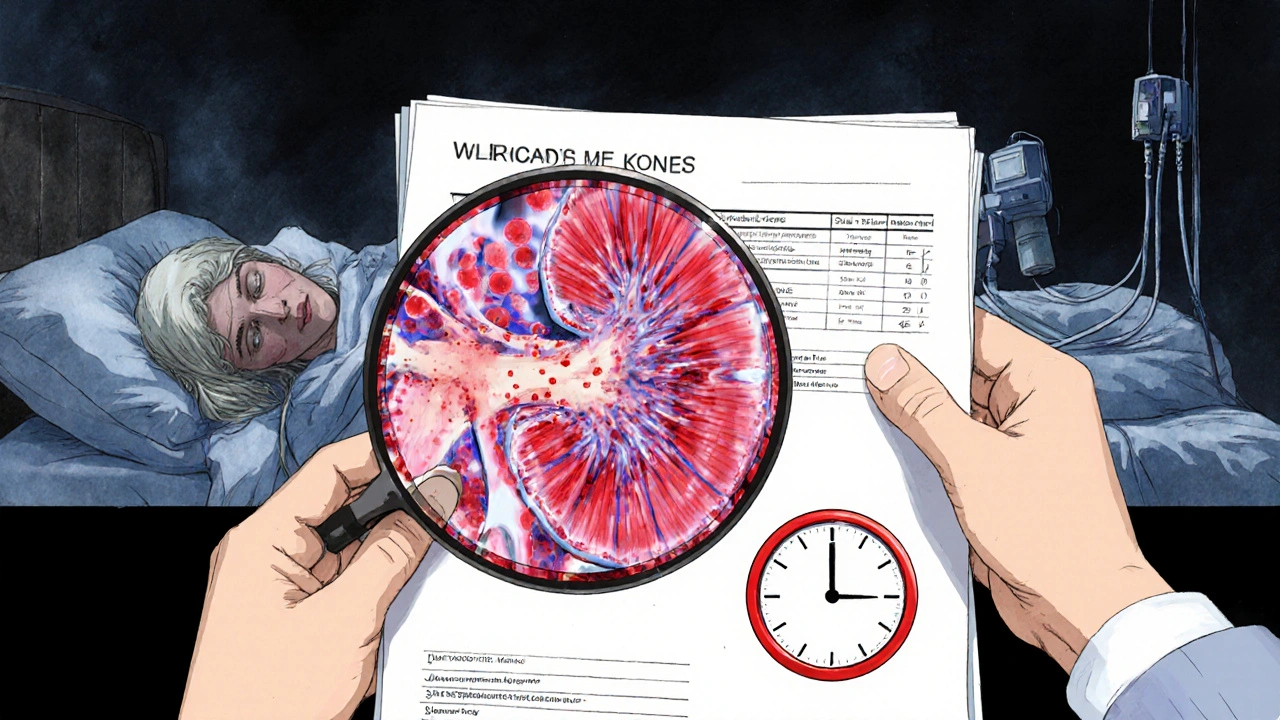
What Happens If You Don’t Act?
Stopping the drug early is the single most important thing you can do. If caught within the first week, most people recover kidney function - 80-90% with antibiotics, 60-70% with PPIs. But if you wait too long, scarring sets in.
Up to 25% of untreated cases progress to chronic kidney disease or even end-stage kidney failure. That means lifelong dialysis or a transplant. Older adults, those on multiple medications, and people with diabetes or high blood pressure are at highest risk.
One patient on Reddit, a nurse practitioner with 10 years of experience, said she’s seen five cases from antibiotics - and three ended in permanent kidney damage, even with early treatment. That’s not rare. It’s common enough to be alarming.
Should You Take Steroids?
This is where things get messy. Some doctors give corticosteroids like prednisone right away. Others wait. Why? Because there’s no solid proof from randomized trials that steroids help.
Observational studies suggest they improve recovery - especially if kidney function hasn’t improved after 7 days of stopping the drug. The European Renal Association recommends steroids for persistent kidney injury. The American Society of Nephrology is more cautious, suggesting steroids only if creatinine is above 3.0 mg/dL.
One patient reported: “I took omeprazole for 3 months. My kidney function dropped to 30%. Stopping the drug and 8 weeks of prednisone brought me to 75% - but I still have to watch it.” That’s a typical story. Steroids can help, but they’re not magic. And they come with side effects: weight gain, mood swings, high blood sugar.
The bottom line: Stop the drug first. Then, if kidney function doesn’t improve in a week, talk to a nephrologist about steroids.
Who’s Most at Risk?
It’s not random. Certain groups are far more likely to develop AIN:
- People over 65 - They make up 65% of cases, even though they’re only 16% of the population.
- Those on five or more medications - Polypharmacy increases risk 4.7 times.
- Women - They’re 1.8 times more likely than men to get drug-induced AIN.
- People with existing kidney issues - Even mild CKD makes you more vulnerable.
And here’s something most people don’t realize: over-the-counter drugs are a huge part of the problem. One study found that 40% of AIN cases involved NSAIDs or PPIs that patients didn’t tell their doctor about. They thought “it’s just a pill for heartburn” or “I take ibuprofen every day - it’s harmless.”
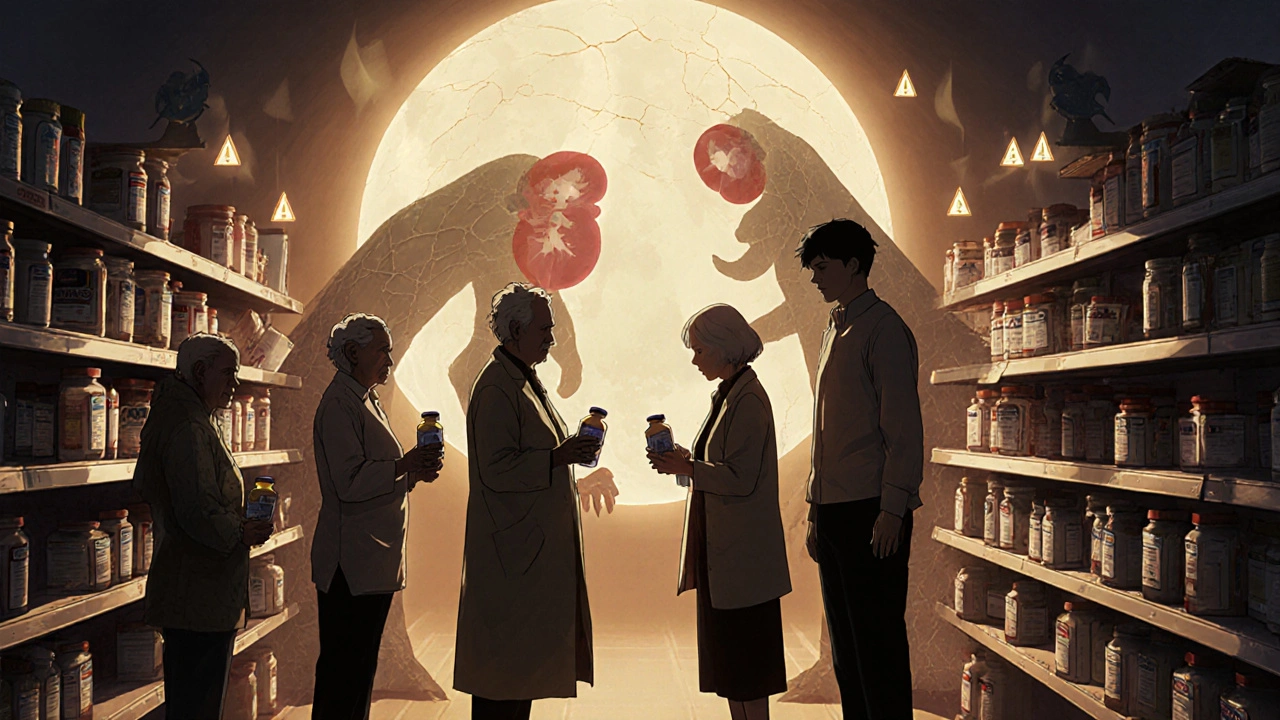
What Should You Do If You Suspect AIN?
Here’s your action plan:
- Stop the suspected drug immediately. Don’t wait for a diagnosis. If you started a new pill in the last 3 months and now have unexplained kidney trouble, stop it.
- Get a urine test. Ask for a urinalysis. Look for sterile pyuria and eosinophils.
- Check your creatinine. A rise of 0.3 mg/dL in 48 hours or 1.5 times your baseline means acute kidney injury.
- See a nephrologist within 48 hours. Don’t wait for your primary doctor to refer you. Call directly.
- Prepare your medication list. Include every pill, supplement, and OTC drug you’ve taken in the last 90 days. Don’t leave anything out.
If your doctor says, “It’s probably nothing,” push back. Say: “I’ve been on [drug name] for X weeks and my creatinine went up. Could this be acute interstitial nephritis?”
The Bigger Picture: Why This Is Getting Worse
The number of AIN cases has more than doubled since 2005. Why? Because we’re taking more PPIs. In 2020, nearly 40% of adults over 65 were on them. By 2030, that’s expected to hit 45%. Each year, about 12 in every 100,000 people develop AIN from PPIs alone.
Hospitals are spending an extra $7,500 per AIN case compared to other types of kidney injury. That’s $18,750 on average - and over $24,000 if dialysis is needed.
Researchers are now using AI to predict AIN risk by analyzing electronic health records. One algorithm got 89% accuracy by spotting patterns in medication use and lab trends. And new genetic markers - like the HLA-DRB1*03:01 gene - are being linked to higher risk for PPI-induced AIN.
But none of that matters if you don’t catch it early. The most powerful tool we have right now is awareness - yours and your doctor’s.
Final Thought: Don’t Assume It’s Just a Side Effect
Medications are lifesavers. But they’re not harmless. AIN is preventable - if you know the signs. If you’ve taken a new drug and your body feels off, don’t brush it off. Your kidneys don’t scream. They whisper. And if you ignore the whisper, you might lose them for good.
Can acute interstitial nephritis be reversed?
Yes, if caught early. Stopping the offending medication within days of symptom onset gives you the best chance - up to 80-90% recovery with antibiotics, 60-70% with PPIs. But if treatment is delayed beyond 2-3 weeks, scarring can set in, leading to permanent kidney damage or chronic kidney disease.
What drugs are most likely to cause kidney inflammation?
The top three are antibiotics (especially penicillins and fluoroquinolones), proton pump inhibitors (like omeprazole), and NSAIDs (like ibuprofen). Immune checkpoint inhibitors used in cancer treatment are also emerging as a serious cause. Even common OTC drugs like daily ibuprofen or long-term PPIs can trigger it.
Do I need a kidney biopsy to diagnose AIN?
Not always, but it’s the only definitive test. Urine tests (eosinophils, sterile pyuria) and blood work (rising creatinine) suggest AIN, but a biopsy confirms it by showing immune cell buildup in the kidney’s interstitial tissue. Biopsy is recommended if diagnosis is uncertain or if kidney function doesn’t improve after stopping the drug.
How long does it take to recover from drug-induced kidney inflammation?
Recovery time varies. Younger patients under 50 often recover in 6-8 weeks. Older adults, especially over 65, may take 12-16 weeks or longer. Some never fully recover - especially if the drug wasn’t stopped quickly or if steroid treatment was delayed.
Can I take NSAIDs again after having AIN?
Generally, no. If you’ve had AIN from NSAIDs, you’re at high risk of recurrence. Even if your kidneys recovered, the same drug can trigger inflammation again - sometimes more severely. Avoid all NSAIDs unless absolutely necessary and under close nephrology supervision.
Is AIN more common in women?
Yes. Studies show women are 1.8 times more likely than men to develop drug-induced acute interstitial nephritis. The reason isn’t fully understood, but it may relate to immune system differences or higher rates of medication use for chronic conditions like autoimmune disorders or acid reflux.
Can AIN lead to dialysis?
Yes, if left untreated. About 15-25% of untreated cases progress to end-stage kidney disease, requiring dialysis or transplant. The risk is highest in older adults, those with multiple medications, and those who delay stopping the triggering drug. Early recognition is the best way to avoid this outcome.
Should I stop my medication if I suspect AIN?
Yes - but only after consulting your doctor. Never stop life-saving medications like blood pressure drugs or heart medications on your own. But if you’ve started a new antibiotic, PPI, or NSAID and now have unexplained fatigue, less urine, or rising creatinine, stop that drug immediately and contact your doctor. Time is critical.
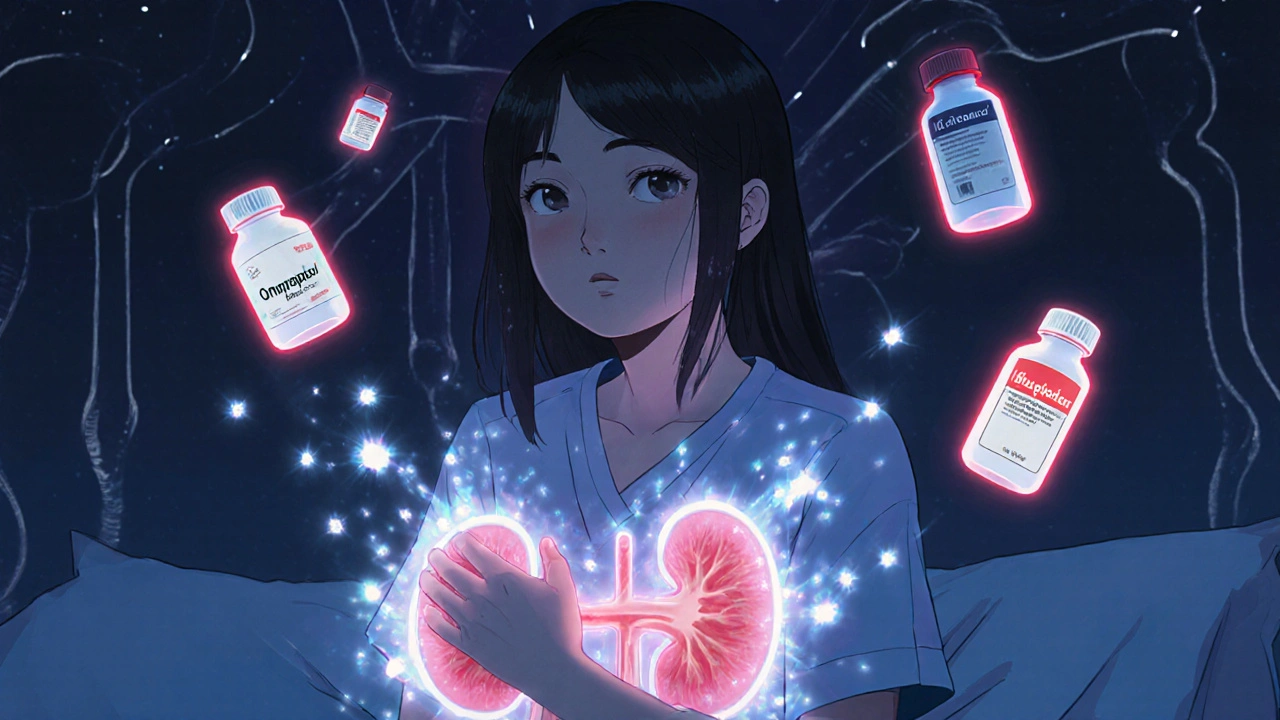

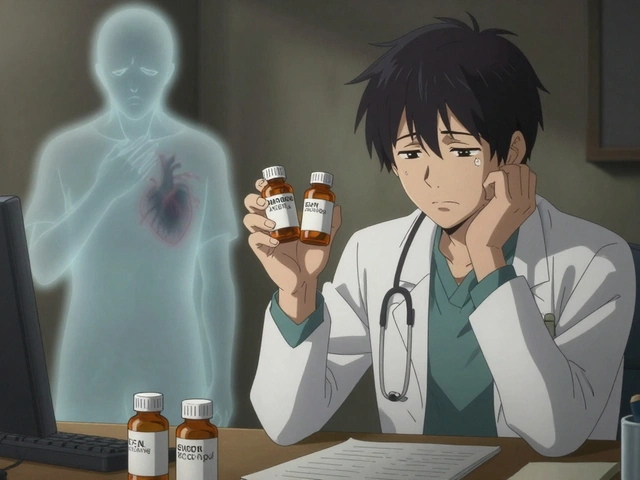
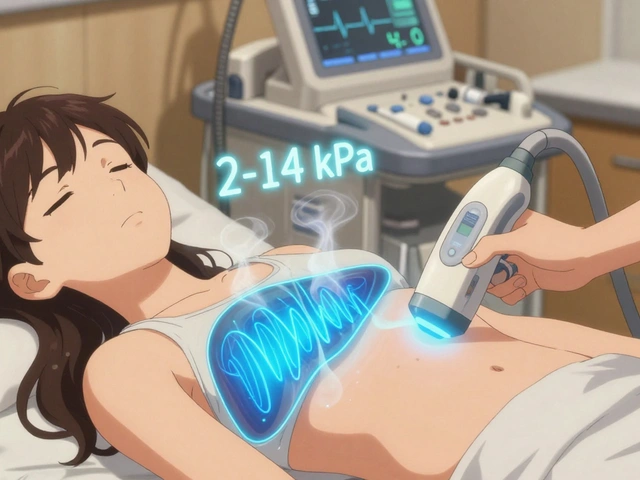
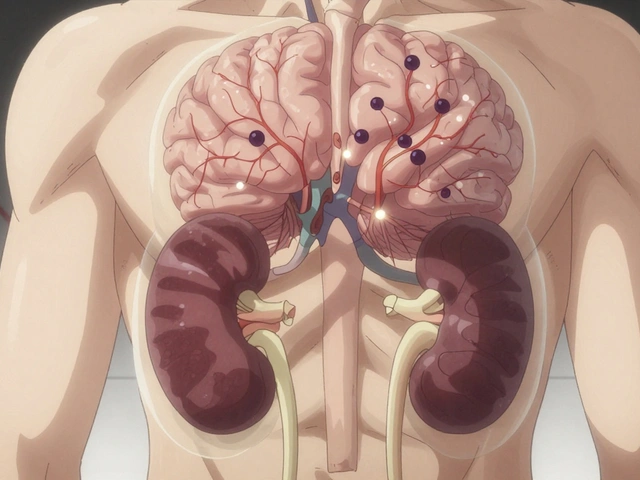
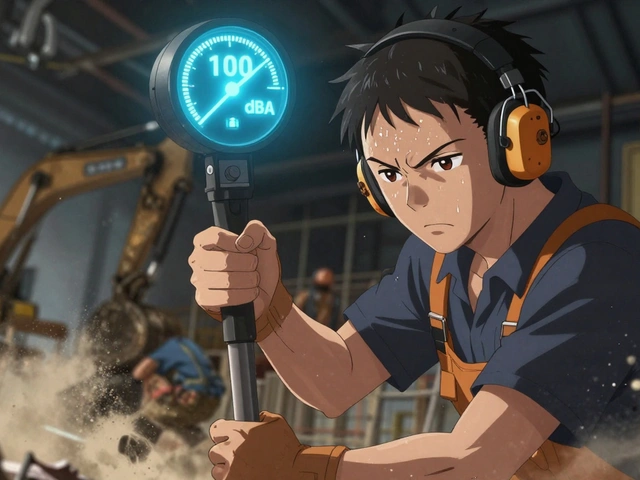
13 Comments
Olanrewaju Jeph
November 21, 2025Great breakdown. I’ve seen this in my clinic-patients on PPIs for years, then suddenly their creatinine jumps. No fever, no rash, just fatigue. We miss it because we’re not looking for it. Always ask: ‘What’s new in your med list?’
Dalton Adams
November 22, 2025Let’s be real-this isn’t even controversial. The data’s been out since 2018. PPIs are overprescribed like candy. The FDA should slap black box warnings on them. And don’t get me started on NSAIDs being sold next to aspirin at CVS. People think ‘OTC’ means ‘safe.’ LOL. 😒
Kane Ren
November 23, 2025Hey, if you’re reading this and you’re worried about your kidneys-you’re already ahead of most people. Seriously. Just stopping that ibuprofen or omeprazole could save your future self a ton of pain. You’ve got this. One step at a time.
Charmaine Barcelon
November 24, 2025You people are so careless!!! I’ve seen this so many times!!! People just pop pills like candy!!! No doctor!!! No research!!! And then they blame the system!!!
Karla Morales
November 25, 2025Interesting. But let’s contextualize: AIN from PPIs has a 0.012% incidence rate in healthy adults. Meanwhile, the mortality rate from untreated GERD is 0.08%. The risk-benefit calculus is skewed by anecdotal fear. Also, eosinophiluria is not specific-it’s seen in UTIs, interstitial cystitis, even Lyme disease. Don’t overdiagnose.
Javier Rain
November 26, 2025YES. This is exactly the kind of info we need to spread. I’m a med student and my grandma was on omeprazole for 7 years-no one ever checked her kidneys. She ended up on dialysis. Don’t wait for symptoms. Ask for a urine dip and creatinine every time you refill that PPI. Be your own advocate.
Richard Wöhrl
November 28, 2025One thing missing here: the role of herbal supplements. I’ve had two patients with AIN triggered by turmeric extracts and green tea pills. People assume ‘natural’ = safe. Nope. The immune system doesn’t care if it’s synthetic or plant-based. Always disclose everything-even the ‘harmless’ stuff.
Pramod Kumar
November 30, 2025Bro, this hit different. I’m from a village where people buy meds from roadside shops-no prescription, no name on the pill. One guy took ‘blue pills’ for acid for 6 months, then his legs swelled up like balloons. No one knew what was wrong. We need this info in local languages. Maybe translate this into Hindi or Swahili? 🙏
Brandy Walley
December 1, 2025so like... people die from heartburn meds? wow. what a scam. i bet the pharma companies made billions off this. also why is this even a thing? why do we even have ppi's? just eat less pizza i guess. 🤷♀️
shreyas yashas
December 1, 2025my uncle got this from ibuprofen. he thought it was just a bad flu. took him 3 months to get diagnosed. now he can't drink coffee without peeing 5 times. the docs said he's lucky he didn't need dialysis. just... be careful with pills, ya'll.
Suresh Ramaiyan
December 3, 2025It’s funny how we treat medicine like a magic wand. We take it without asking why, without wondering what it’s changing inside us. The body doesn’t just ‘handle’ drugs-it negotiates with them. Sometimes it says ‘no’ by shutting down the kidneys. Maybe the real question isn’t ‘which drug?’ but ‘why is your body screaming?’
Katy Bell
December 4, 2025I’m a nurse and I’ve seen this so many times. One woman came in with 10 different meds, including 3 OTC PPIs she didn’t think counted. She was crying because she thought she’d never be able to eat spicy food again. We stopped the meds, started steroids, and in 6 weeks, her kidneys were back to normal. It’s not hopeless. But you have to speak up.
Lisa Lee
December 5, 2025Why is this even a problem in the US? In Canada we don’t have PPIs on the shelves like candy. We have actual regulations. You need a script. That’s why we don’t have this mess. Americans treat medicine like a free-for-all. Sad.